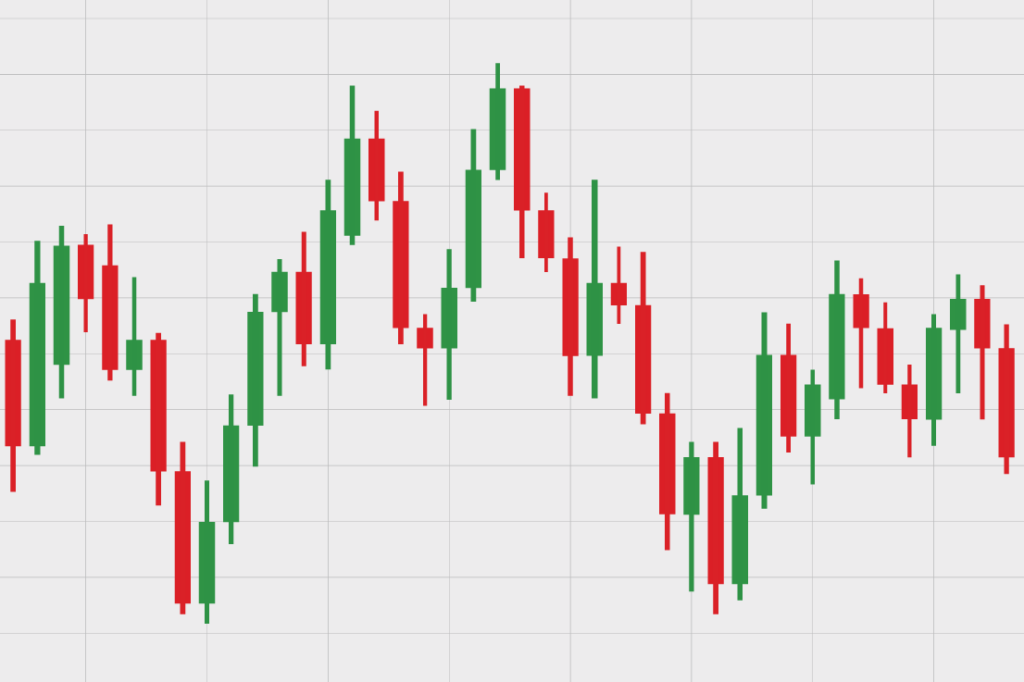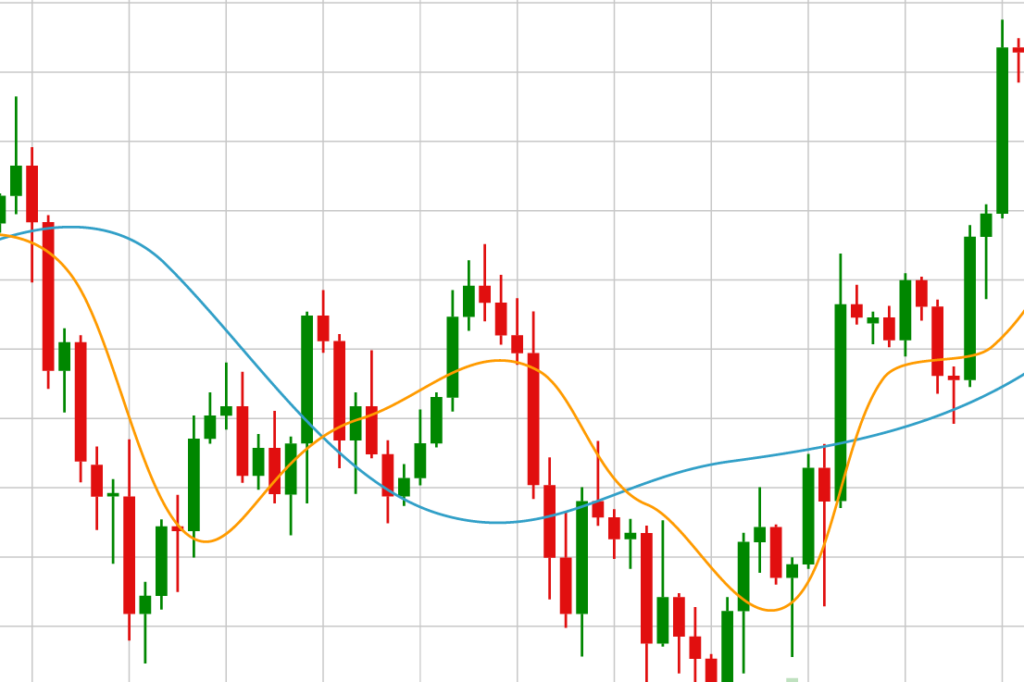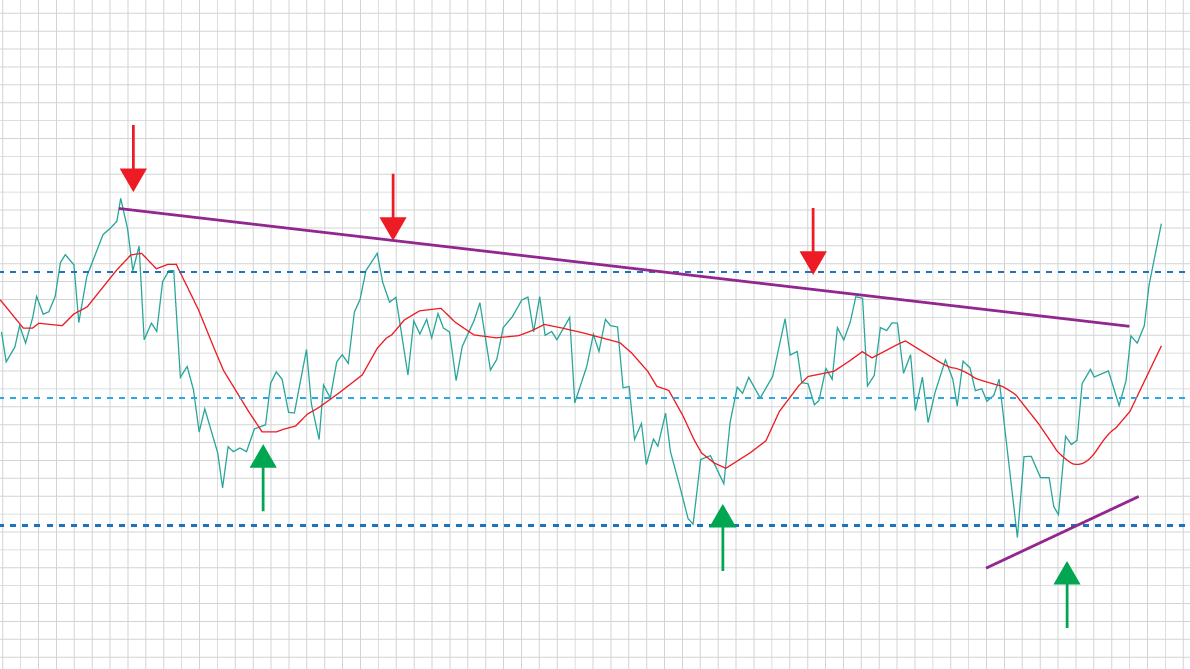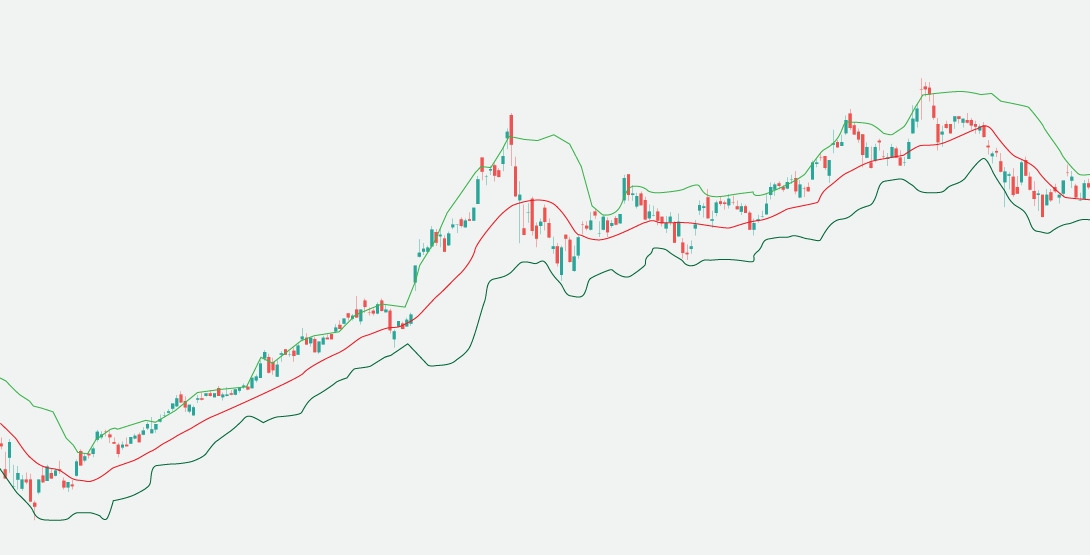When you step into the world of trading, you’ll quickly hear about ‘technical analysis’. It’s a method traders use to predict future market movements based on past market data. Technical analysis is not just about one tool or technique, it’s a whole toolbox, each with its own purpose.
In this blog, we’ll unpack some of these tools so you can better navigate the trading world.
Candlestick Patterns
First up, let’s talk about candlestick patterns. These are a way to read and interpret price movements on a chart. Each candlestick provides four key pieces of information: the opening price, the closing price, the highest price, and the lowest price over a specific time. But it’s not just the numbers, it’s the shape and colour of the candlesticks that can indicate potential market trends.
For example, a ‘bullish engulfing’ pattern, where a smaller red candlestick (indicating a price decrease) is followed by a larger green candlestick (indicating a price increase), might suggest an upcoming uptrend. Similarly, a ‘bearish engulfing’ pattern can signal a potential downtrend.

Technical Indicators
In trading, technical indicators take the raw data of currency price movements and volume and crunch it into more manageable bits of information that can show trends or predict future moves.
Some popular technical indicators include moving averages, the Relative Strength Index (RSI), and Bollinger Bands. Let’s break each of them down to see how they can help you in your trading journey.
Moving Averages
Moving averages are all about simplifying the fluctuating price data of currencies to help you identify trends. Think of it as the average price of a currency over a set period. You can set this period to anything you like — 5 days, 20 days, 100 days, and so on.
If the current price is above the moving average, it could indicate an uptrend, suggesting that it might be a good time to buy. If it’s below, it might be heading for a downturn, signalling a potential sell. By looking at how the moving average moves over time, you can get a sense of whether an uptrend is strong or if a downturn is about to flip.

Relative Strength Index (RSI)
The RSI measures the speed and change of price movements and expresses it as a number from 0 to 100. Generally, if the RSI is above 70, the currency might be considered overbought — meaning it might be getting too pricey, and a price drop could be on the way. If it’s below 30, it’s potentially oversold — possibly undervalued, and the price could soon rise.
Traders use this to figure out when to enter or exit a trade. An RSI reading can hint at whether the current trend is running out of steam and a reversal might be in the cards.

Bollinger Bands
Bollinger Bands consist of three lines: a middle line which is a moving average, and two outer lines that measure how volatile or ‘bouncy’ the market is. The outer bands expand when the market is volatile and contract when it’s stable.
If the price is continuously touching the upper band, the market could be overextended to the upside. If it’s scraping the lower band, it might be overextended to the downside. Some traders use Bollinger Bands to find ‘squeeze’ scenarios, where the bands come close together, indicating that a big price move could be coming.

Algorithmic Trading
Algorithmic trading is a term that’s becoming increasingly common in the financial world. It’s a high-tech approach to trading that uses computer programs, known as algorithms, to buy and sell assets in the forex market. These algorithms are designed to follow specific sets of instructions or criteria, such as timing, price, or quantity, to place trades.
The Mechanism of Algorithmic Trading
Let’s say you’re planning to sell a car. You want the best possible price, but you don’t have time to negotiate with every interested buyer. Now, imagine a system that can take your car to the market and execute the sale for you, based on the price and terms you’ve set. That’s, in essence, what algorithmic trading does for the forex market.
An example of algorithmic trading is a program set to purchase EUR/USD when it falls to 1.1500 and sell it when it reaches 1.1550. The algorithm can monitor the market 24/7 and execute the trade instantly when those conditions are met, ensuring you don’t miss the opportunity.
Advantages of Algorithmic Trading
The primary advantage of algorithmic trading is speed. These systems can process vast amounts of data and execute trades within fractions of a second. For traders, this means being able to take advantage of price changes and market movements that happen in the blink of an eye — opportunities that would be impossible to leverage manually.
Another significant benefit is emotional detachment. Trading can be stressful, and sometimes emotions can lead to impulsive decisions. Algorithmic trading eliminates this issue as trades are based solely on data and pre-determined rules, promoting discipline in trading decisions.
Risks Associated with Algorithmic Trading
However, with great power comes great responsibility, and algorithmic trading is not without its risks:
Systemic Errors
If there’s a flaw in the algorithm, it can result in unintended trades. A decimal point in the wrong place could mean buying 100 times more of a currency than intended, leading to significant financial loss.
Market Impact
Large orders executed via algorithms can sometimes affect the market. If a large sell order is detected by others, it can lead to a decrease in the currency price, impacting the trade’s profitability.
Over-Optimisation
Algorithms based on historical market data might not perform well in real-time trading because market conditions can change rapidly, and past performance doesn’t guarantee future results.
Security Risks
Trading platforms are not immune to cyber threats. A security breach could lead to compromised algorithms and unauthorised trades.
Best Practices for Algorithmic Trading
To mitigate these risks, traders should employ best practices:
Backtesting
Before live implementation, test the algorithm against historical data to ensure it performs as expected.
Risk Management
Implement strict risk control measures, including setting maximum loss limits and monitoring trades in real-time.
Regular Updates
Keep the algorithm updated with market conditions and adjust the rules as necessary.
Security Measures
Use secure platforms and keep your software updated to protect against cyber threats.
Technical Analysis Tools
Beyond these, there are various other tools and platforms available for technical analysis. These can range from basic charting software to more advanced platforms offering a variety of indicators and analytical tools. Many traders use platforms like MetaTrader or TradingView, which provide real-time data, charting capabilities, and even the option to automate trades using algorithms.
Final Words
Technical analysis in forex trading might seem complex at first, but it’s all about finding the tools that work for you. Remember, there’s no one-size-fits-all solution, it’s about experimenting, learning, and adapting to find the strategies that align with your trading style and objectives. With practice and patience, these tools can become an integral part of your trading toolkit, helping you make more informed and confident trading decisions.




